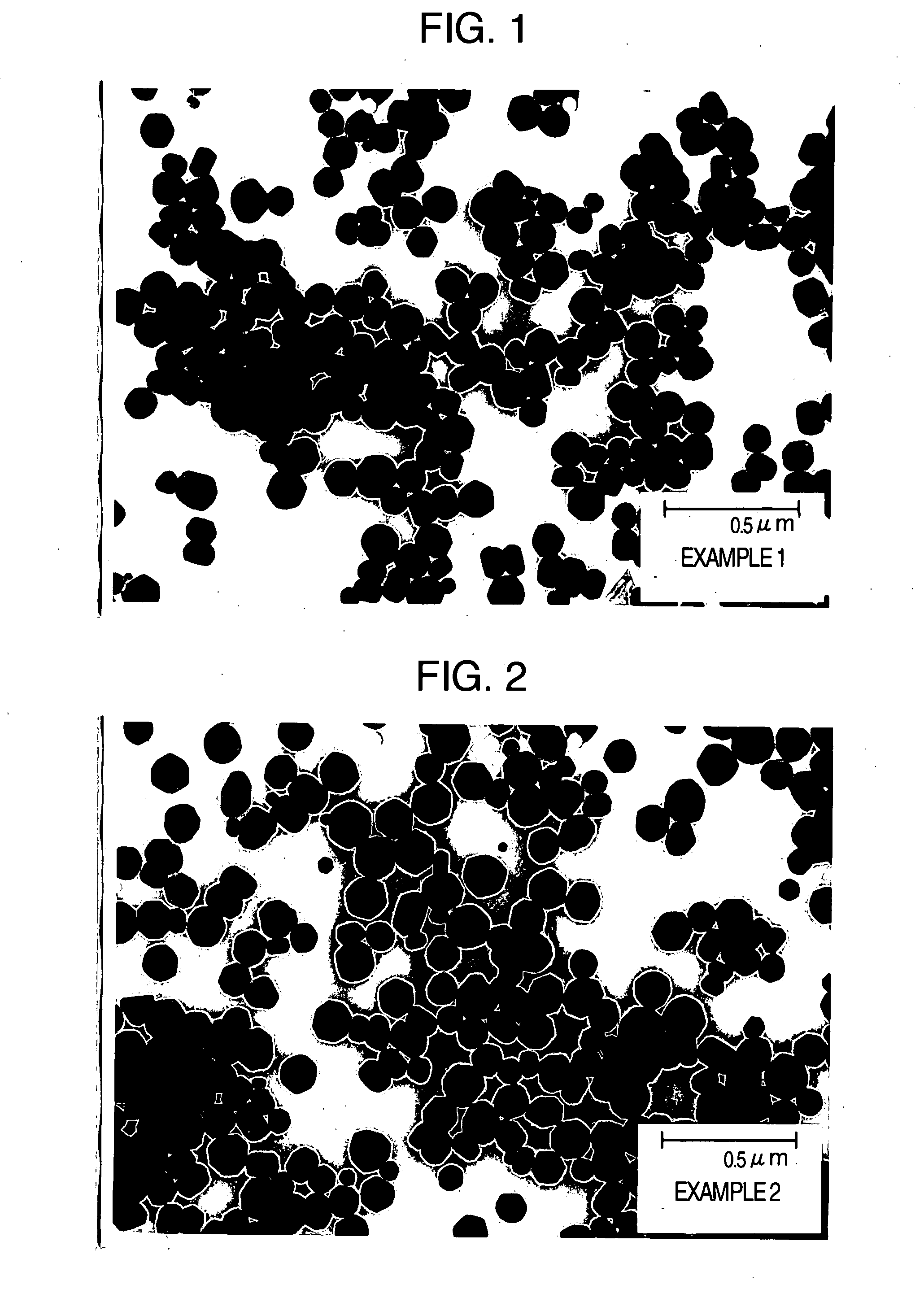Copper Microparticle and Process for Producing the Same
- Summary
- Abstract
- Description
- Claims
- Application Information
AI Technical Summary
Benefits of technology
Problems solved by technology
Method used
Image
Examples
example
[0039]The present invention will be explained in more detail by the following examples, which should not be construed as limiting the invention in any manner.
1. Preparation of Copper Microparticles and Evaluation
examples 1-16
[0040]24 g of industrial cupric oxide (N-120 manufactured by NC Tech Co., Ltd.) having an average crystallite diameter of 90.2 nm and 9.6 g of gelatin as a protective colloid were added to 300 ml of pure water and mixed, and the pH of the mixed solution was adjusted to 11 with 15% aqueous ammonia, followed by heating from room temperature to 90° C. over 20 minutes. After the heating, while stirring, thereto was added a mixed solution prepared by mixing a solution of a complexing agent (kind and amount of the complexing agent used are shown in Table 1) and 28 g of 80% hydrazine monohydrate with 150 ml of pure water, and a reaction with the cupric oxide was carried out over 1 hour to produce copper microparticles. Thereafter, the copper microparticles were subjected to filtration and washing until the specific conductivity of the filtrate reached 100 μS / cm or lower, and dried at a temperature of 60° C. over 10 hours in an atmosphere of nitrogen gas to obtain copper microparticles of t...
example 17
[0041]24 g of the industrial cupric oxide used in Example 1 and 2.8 g of gelatin as a protective colloid were added to 150 ml of pure water and mixed, and the pH of the mixed solution was adjusted to 11 with 15% aqueous ammonia, followed by heating from room temperature to 90° C. over 20 minutes. After the heating, while stirring, thereto was added a mixed solution prepared by mixing 0.24 g of 1% 3-mercaptopropionic acid solution as a complexing agent (the amount is shown in Table 1) and 10 g of 80% hydrazine monohydrate with 150 ml of pure water, and a reaction with the cupric oxide was carried out over 1 hour to produce copper microparticles. Thereafter, the copper microparticles were subjected to filtration and washing until the specific conductivity of the filtrate reached 100 ES / cm or lower, and dried at a temperature of 60° C. over 10 hours in an atmosphere of nitrogen gas to obtain copper microparticles of the present invention (Sample Q).
PUM
| Property | Measurement | Unit |
|---|---|---|
| Length | aaaaa | aaaaa |
| Percent by mass | aaaaa | aaaaa |
| Percent by mass | aaaaa | aaaaa |
Abstract
Description
Claims
Application Information
 Login to View More
Login to View More - R&D
- Intellectual Property
- Life Sciences
- Materials
- Tech Scout
- Unparalleled Data Quality
- Higher Quality Content
- 60% Fewer Hallucinations
Browse by: Latest US Patents, China's latest patents, Technical Efficacy Thesaurus, Application Domain, Technology Topic, Popular Technical Reports.
© 2025 PatSnap. All rights reserved.Legal|Privacy policy|Modern Slavery Act Transparency Statement|Sitemap|About US| Contact US: help@patsnap.com



